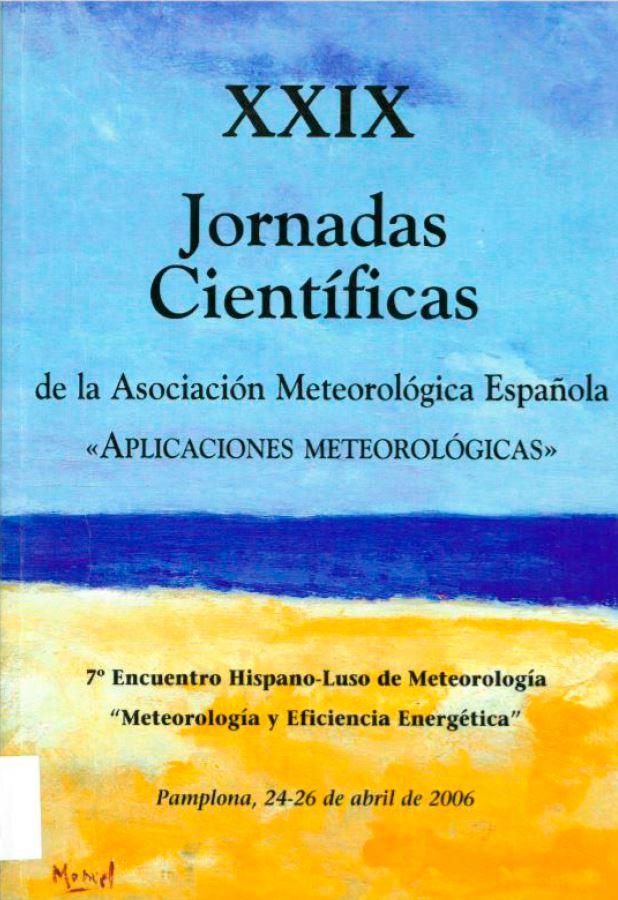TORMENTA SEVERA EN SANTANDER: 24 DE JUNIO DE 2003
Resumen
Durante la mañana deL día 14 de Junio de 2003 y, concretamente, entre las las 09:50Z y las 10:00Z (11:50 y 12:00 Hora local), se produjo una fuerte tormenta en la ciudad de Santander y alrededores, con precipitación que alcanzó intensidad torrencial: según los datos medidos en el Observatorio Meteorológico de Santander, se registraron 27 mm de precipitación en esos diez minutos, acompañada de granizo de un tamaño alrededor de 2 cm. Esta precipitación supone una intensidad de 162 mm/hora: máxima registrada en Santander en los últimos 20 años. El fenómeno resultó espectacular, por cuanto estuvo acompañado de un oscurecimiento notable, hacia las 09:30Z (11:30 hora local), que hizo encenderse el alumbrado público. La cantidad de agua caída en tan poco tiempo, originó problemas de tráfico en la ciudad de Santander y alrededores: calles anegadas, sótanos y garajes inundados, etc . También se produjeron fuertes tormentas en numerosos puntos de la región de Cantabria, aunque no llegaron a ser tan fuertes como la registrada en la capital: Santander.Citas
- AMERICAN METEOROLOGICAL SOCIETY. : "Radar in Meteorology" . Editor: David Atlas
- BADER, FORBES, GRANT, LILLEY and WATERS : "Images in weather forecasting". Cambridge University Press.
- BUNKERS M. J., ZITLER J.W : "On the nature of highly deviant supercell motion" . NOAA/NWS
- CARRETERO PORRIS O. 2001:" Convección Profunda: Clasificación " S.T.A.P. I.N.M. Madrid. Apuntes del Curso de Diagnóstico y Predicción de la Convección Profunda 2000-2001.
- CARRETERO PORRIS O. 2001.: “ Identificación, seguimiento y extrapolación de células convectivas radar 3-D “ . S.T.A.P. (I.N.M.)
.- ELIZAGA RODRIGUEZ, F. 2001: " Análisis de sondeos, uso y aplicación de la hodógrafa". S.T.A.P. I.N.M. Madrid . Apuntes del Curso de Diagnóstico y Predicción de la Convección Profunda 2000-2001.
.- KLIMOWSKI B. A., PRYZBYLINSKI R., SCHMCKER G., HJELMFELT M.R.: Observations of the formation and early evolution of bow echoes"
.- MARTIN LEON F. , SAN AMBROSIO I., CARRETERO PORRIS O.2001: "Supercélula severa en el área mediterránea". S.T.A.P.(I.N.M )
.- MARTÍN LEON F. 2001.“ Identificación de células convectivas a partir de datos radar a nivel regional: prototipo 2D-M”. S.T.A.P. (I.N.M.)
- MARTIN LEON F. , SAN AMBROSIO BIERÁN I. 2005. “Análisis de estructuras y células convectivas mediante datos de radar regional. Aplicación YRADAR”. S.T.A.P. (I.N.M.)
- MINNAERT M. : "The nature of light and colour in the open air"
- MUÑOZ Luis M.1994: "Structure and Evolution of Thunderstorms Encountering Temperature Inversions". Convective Modeling Group. Department of Atmospheric Sciences. University of Illinois.
- PECKHAM S.E., WICKER L. J., 1998 : "The Influence of Topography and Lower- Tropospheric Winds on Dryline Morphology" . Monthly Weather Review: Vol.128 , No.7.
- SANZ MORAL P. 2004 "Recopilación bibliográfica de Indices de Inestabilidad" .C.M.T. en Cantabria y Asturias. Equipo Tecnico del G.P.V. I.N.M.
- SCHAEFER V. J. :"Guía de campo de la atmósfera". Editorial Omega
- WEISMAN MORRIS .L. 2001. "Bow echoes: a tribute to T.T. Fujita" . Bulletin of the American Meteorological Society Volumen 82, Num:1 Enero 2001
- WOLF R., PRYZBYLINSKI R., BERG P.2001 : "Observations of a merging bowing segment and supercell" NOAA/NWS

